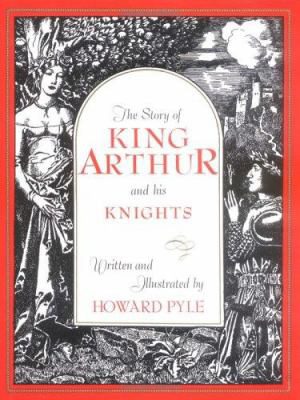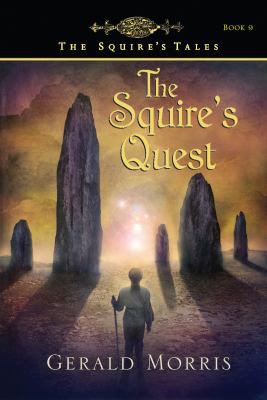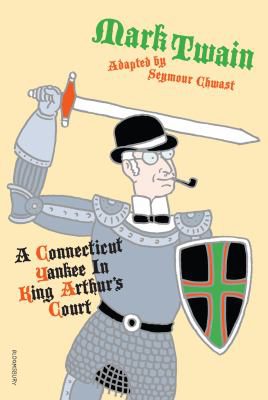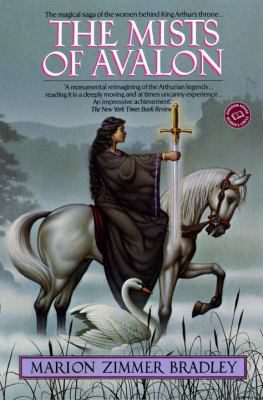The evolution of the legend of Arthur
Posted on January 22, 2019 at 6:00 am
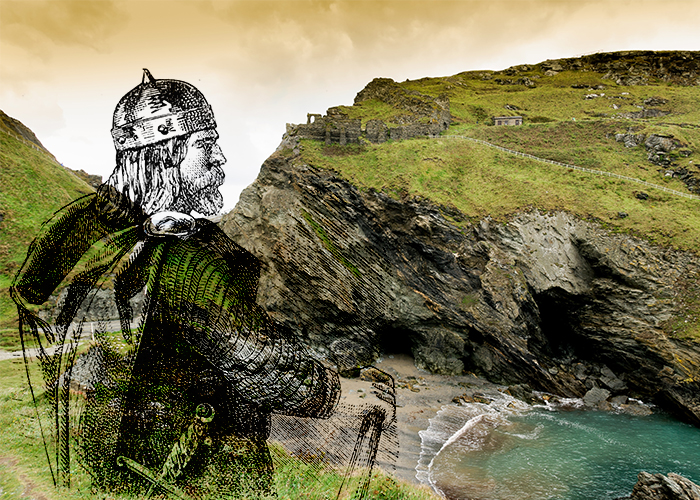
By Caitlin Wheeler
A young boy grows up poor, not looked after by his foster parents. Abused, neglected, and destitute, he expects little from life, and life expects little from him. Until one day, everything changes. The child in servant’s clothes now wears a crown, and his childhood among the people turns out to have trained him for the task of kingship very well. He is keen, kind, just, and dedicated. A happy ending for our hero, and for all—at least until the throne is vacant again and returns to the powerful upper class.
This tale is told over and over again, adapted by many authors.
The Lord of the Rings and The Chronicles of Narnia both have good-hearted underdogs who rise to glory and lead with gentle, open hands.
Depending on how you play the Dragon Age role-playing video game series, the first game Origins often fulfills this trope and can fulfill it for more than one person.
The Avatar in Avatar: the Last Airbender almost always comes from a similar background and creates a short-lived but real peace.
Even the characters in the Hunger Games are subject to a twisted form of the chosen ruler story. While Katniss and District 12 know the games are cruel and oppressive, the people of the Capitol see the players as a chosen few who have the chance to rise out of poverty and unremarkable beginnings into fame and fortune. When the rebellion finally takes place, its leaders capitalize on this interpretation by making Katniss their figurehead.
But these weren’t the first stories to come to mind—Arthur holds that spot.
The legend of Arthur has changed a lot in the last 1,500 years. Pervading our modern myth is a kind-hearted and just ruler in a court full of civil and courteous knights.
You can see this when Jacqueline Kennedy famously mythologized the late John F. Kennedy as a legendary idealist with the words, “There will be great presidents again, but there will never be another Camelot.”
If you want to evoke peace, beauty, and equality, you reference Arthur. But that beauty is sweet partly because it is so fleeting. Lurking behind the trappings of courtesy and justice, there must always be tragedy.
Perhaps you think of Guinevere and Lancelot. Is infidelity the cause of Camelot’s fall or was Arthur overzealously jealous and vengeful? Or maybe you focus on Mordred, insisting on his right to be recognized as his father’s son, not unlike Arthur himself?
Maybe you don’t think of the romantic intrigue at all. Maybe you think of the precarious balance between the practical and the mystical. Or between imperialist order and indigenous rights. Of the shadowy figures of Merlin, Morgan le Fay, Nimue, and Morgause. Perhaps you think of magic. A grail said to give immortal life. A sword in a stone. A woman who dwells within a lake. A garter which protects the wearer from harm.
These are just a few of the quickest cultural touchstones “King Arthur” can bring to mind. You could instead have thought of your favorite brand of flour. Or Harrison Ford battling Nazis. Or the airspeed velocity of a laden swallow.
We don’t know for sure where the story of Arthur began. Some claim he was a real king who defended Britain against Saxon invaders sometime around the year 500. If it’s difficult to parse real and fake news in today’s world, imagine having to figure out which writers 1,500 years ago were telling accurate history and which just shared a good (and perhaps fictionalized) story.
The first clear, datable reference to Arthur can’t be found until the year 828, in the Historia Brittonum. In this history, Arthur is not a king but a warleader. The familiar cast—Merlin, Guinevere, Lancelot, Gawain, Mordred—are all missing.
A later Welsh text written in the 900s depicts a similar warleader, but includes a bard named Merlin who went mad and ran into the forest, a battle which caused the death of Arthur, a warrior named Mordred, and many other Britons.
Whether accurate or not, these early accounts hint at the epic tragedy we are familiar with. By the 12th century, Welsh stories of Arthur were rife with monsters and supernatural powers: in Culhwch and Olwen, the hero calls upon Arthur’s court to fight a giant so lethargic that his eyelids must be propped up by forks. Kay, Gawain, and Bedivere make an appearance, but the company is almost unrecognizable, full of shapeshifters and magic weaponry.
After that, things start to get recognizable. In 1138, Geoffrey of Monmouth gives us Uther Pendragon, Morgan le Fay, and Merlin the magician. The romance authors of the late 1100s added Lancelot and the Holy Grail and refocused the stories of Camelot away from Arthur and onto the quests and deeds of his court.
Then came that all-uniting thing: the printing press. Le Morte d’Arthur, or The Death of Arthur, by Thomas Malory, was among the first books ever printed in England, and perhaps this is why his tales of Lancelot, Guinevere, the Holy Grail, Tristan and Isolde, and the death of Arthur and the fall of Camelot are the ones that have been the touch points for writers ever since.
There are all sorts of retellings since Malory’s 1485 collection, and many of those also shape the Camelot we know and love today: Tennyson’s “Lady of Shalott” and T. H. White’s “The Once and Future King” on which was based the classic animated film The Sword and the Stone.
Harry Potter makes sure to root itself in the readers’ magical knowledge by referencing Merlin, and even Nobel-winning author Kazuo Ishiguro sets his 2015 novel The Buried Giant in post-Arthurian England.
With the movie The Kid Who Would Be King coming out on Friday, now is the perfect time to brush up on your Arthurian literature.
Here are a few classics in our collection to whet your interest.
The Mabinogion, Vol 1, Vol 2, Vol 3, translated by Lady Charlotte Guest
This
collection of early Welsh tales includes the madcap tale of “Culhwch and Olwen”
and its superhero-like protagonists. The characters feel distinctly mythical
and strange. It makes for an excellent introduction into Welsh medieval
storytelling and Arthuriana before the
writings of Geoffrey of Monmouth. If you enjoyed The Chronicles of Prydain or The Silmarillion, you will see where
the authors of these works found their inspiration. The Sydney Lanier version
of The Boy’s Mabinogion on
Biblioboard contains Alfred Frederick’s beautiful line-drawn illustrations.
The Story of King Arthur and His Knights, by Howard Pyle
Written in 1903, Pyle’s prose is anything but outdated. Like his retelling of Robin Hood, these stories are not simply copies or translations of previous works, but newly embellished tales full of the author’s own lyricism and imagination.
The Squire’s Tales Series, by Gerald Morris
These were the stories that introduced me to Camelot and gave me an undying love for Sir Gawain. Written for middle graders, these books center mostly on original side characters who interact with the knights and nobles of Arthur’s court. Most of the stories in this series focus at least partially on identity and looking for goodness within rather than without.
A Connecticut Yankee in King Arthur’s Court, by Mark Twain
Twain’s signature humor and cynicism show full marks in this sometimes humorous, sometimes devastating tale of an engineer from the 1800s who ends up transported to Arthurian England. Hank uses his modern knowledge of science to trick the court into believing he is a magician. While he hopes to use his “powers” for good, he struggles in the face of so much superstition.
The Mists of Avalon, by Marion Zimmer Bradley
Unlike most Arthuriana, this series focuses on the women of Camelot, with a special eye toward exploring the motivations of Morgaine (Morgan le Fay). Bradley’s interpretation is known for its emotional intelligence, complicated views of truth and morality, and defense for cultures which are threatened with erasure by imperialism. The books were adapted into a TV miniseries in 2001.
Any Arthuriana enthusiast will know I’ve barely scraped the surface of the Arthurian mythos here. I’m always looking for more good takes on the legend. If you have a favorite you’d like to recommend, tell me about it in the comments. I look forward to discovering new favorites!

Tags: adults, adventure, Arthurian, books, Britton, Guinevere, heros, kids, King Arthur, knights, knights of the round table, Lancelot, legend, legend of Arthur, magic, Merlin, monsters, Morgaine, Morgan le Fay, Morgause, myth, Nimue, reading, round table, Saxon, tales, tweens, Welsh, YA


